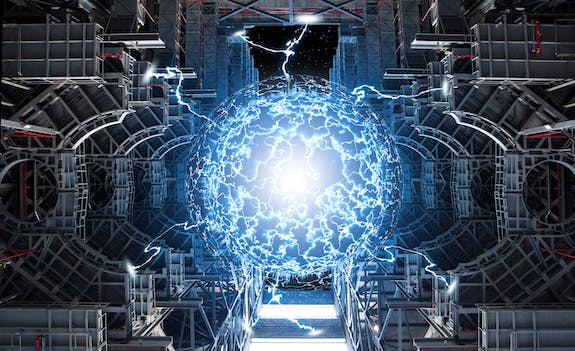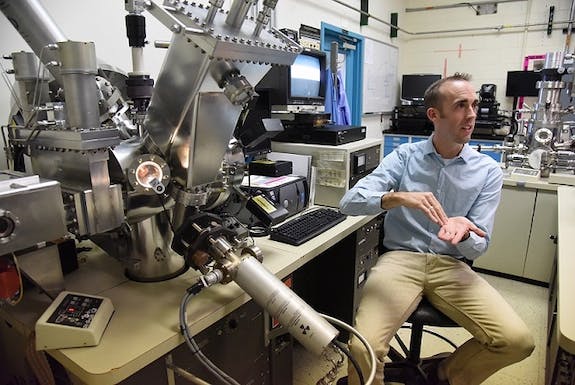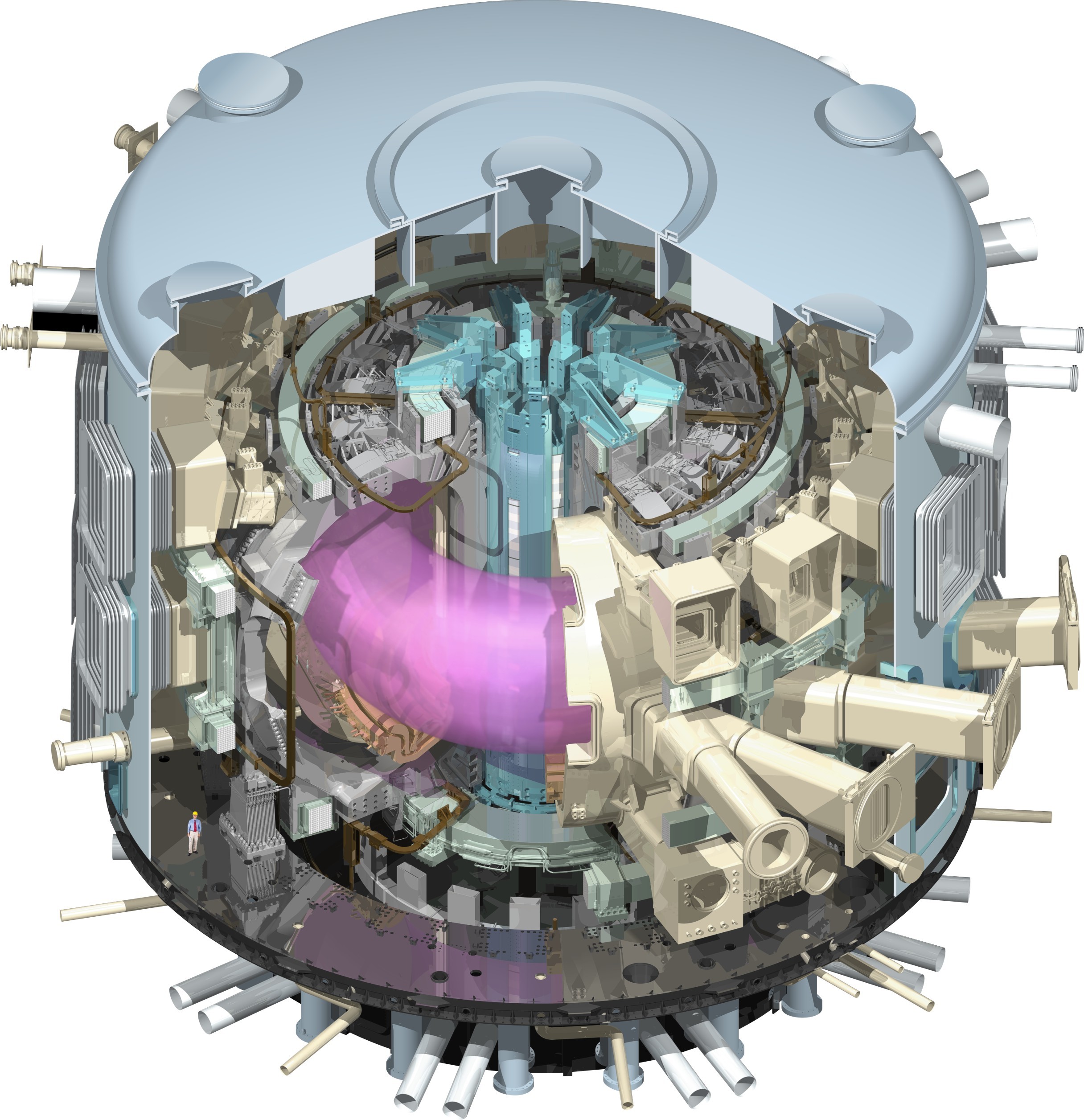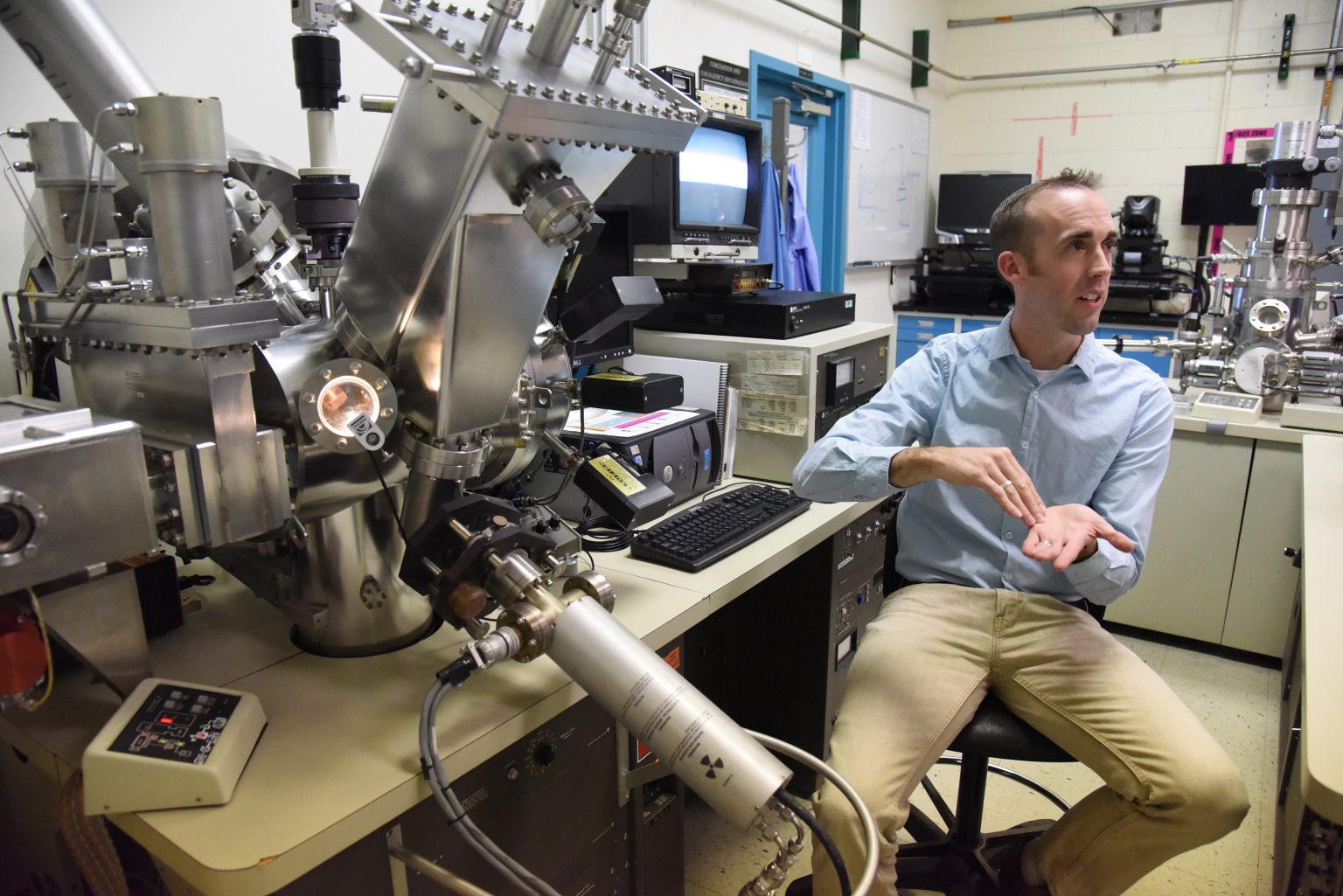Nuclear fusion is viewed by many as the holy grail of clean, renewable energy. Although studied since the 1920s, scientists have yet to overcome technological issues and the economics of this process that promises to deliver energy in the future.
Yet, in 2025, scientists plan to fire up the first fusion reactor slated to produce more energy than it takes to run it. That will prove the concept of an economically viable alternative contributor to the electric grid.
Getting there is a long road. Nuclear engineer Chase Taylor is a senior staff scientist with Idaho National Laboratory, a nuclear research facility. He is hard at work solving some of the problems that will make a commercially viable fusion reactor possible.
Fusion versus fission
Power plants generate electricity by converting mechanical power, like the rotation of a turbine into electrical power. The plants rely on either fossil fuels, nuclear fission or renewable sources like hydro to turn the turbines.
Fission powers today’s electricity-producing nuclear reactors. Nuclear fission releases heat energy by splitting atoms. The energy produced by the reaction heats water, which produces steam to turn turbines and ultimately produce electricity.
Fission has many advantages. It provides very reliable, low emission energy, is long-lasting, and has the lowest annual mortality rate of any energy resource. It is well understood, and advanced fission reactor systems can further amplify its benefits in smaller packages with even stronger safety performance than current designs.
Fission reactor systems can be dangerous when poorly-designed or -managed, as events in Chernobyl and Fukushima have shown. Large scale plants have high initial capital investment and its waste products require very long-term storage if recycling efforts are not employed.

Fusion, a separate process, is a nuclear reaction where atomic nuclei of low mass fuse to form a heavier nucleus with an accompanying release of energy. It’s what powers the sun.
A fusion reactor uses hydrogen isotopes, deuterium and tritium, as fuel. (Isotopes are variations of a chemical element with different numbers of neutrons in the nucleus.) The supply of fusion fuel is virtually unlimited; deuterium can be found in seawater and tritium can be produced during the fusion reaction during contact with lithium. Although it has a small fraction of the element, fusion fuel fills our oceans, giving us a limitless fuel supply. Another benefit to fusion is that a fusion reactor cannot have a runaway catastrophic nuclear event, like a meltdown.
“It’s not possible. Even in the most remote possibility,” Taylor said. “It’s not that it’s engineered to be safe, it’s just the physics of fusion. Simply, if anything goes wrong, the fusion reaction will stop. That’s actually what makes fusion so challenging.”
But fusion has some drawbacks. Controlling a fusion reaction has proved difficult. The hydrogen bomb is based on an uncontrolled fusion reaction. If the same amount of energy could be released gradually in a controlled manner, fusion could live up to its promise.
Fusion also leads to radiation damage on plant systems and some radioactive waste, and will also initially have high operating costs.
The problem
Fusion uses these isotopes in a plasma, a kind of flowing gas that responds to electric fields, like the gas in fluorescent lights. A fusion reactor heats that gas to extremely high temperatures and compresses it with magnets.
But some of the material leaks out and slams into the tungsten armor tiles that line the walls inside of the donut-shaped reactor. A fusion reactor produces neutrons, which can penetrate deep into the walls and create a pathway for the deuterium and tritium to follow. That’s an inefficiency in the process and a possible safety issue.
“We are interested in looking at how much of that deuterium and tritium, that should be used as fuel, is instead getting stuck in the tungsten tiles, and how deeply it is trapped in the tile,” Taylor said.
From a regulatory point of view, operators are limited to a certain amount of deuterium and tritium in a facility. But those isotopes are intended to be used as the energy source. If some of it is stuck in the walls of the reactor vessel, the deuterium and tritium aren’t available to create heat and eventually electricity. Yet it still counts against the operator’s regulated limit. That’s an efficiency issue that must be overcome.
“By studying how much deuterium and tritium penetrate the walls and how deeply, we can better understand this process,” he said.

Two standard techniques exist for measuring the total quantity of tritium that penetrates into the walls. One is by heating up the tile sample and boiling out all of the trapped deuterium and tritium. Scientists make the measurement with a quadrupole mass spectrometer. But that doesn’t tell you anything about how deep the isotopes were trapped in the sample.
The second and somewhat less available technique is nuclear reaction analysis. Unfortunately, that is limited to just a few microns in depth, between three and eight microns in the tungsten. It can’t see anything deeper than that.
“Some publications estimate that technique (nuclear reaction analysis) misses up to 90 percent of the total deuterium or tritium that is stuck in the sample,” Taylor said. “So it’s difficult to say in an accident-based scenario, based on that technique, how much deuterium and tritium is actually stuck.”
Taylor sought out a technique that would be sensitive and to allow him to look much deeper into the sample.
GD-OES
That’s where Glow Discharge Optical Emission Spectrometry (GD-OES) comes into play. It measures the elements present in the sample, at what concentration levels, and of course, how deeply the materials have penetrated into the tungsten tiles.
GD-OES burrows into the sample, characterizes its composition and measures the depth of penetration of the radioactive substances.
“Very few techniques are even sensitive to deuterium and tritium,” Taylor said. “But optical emission spectroscopy is one of those techniques that is sensitive to it. And this technique also lets us quickly look up to a hundred microns in the sample, which far surpasses the capabilities that are currently considered standard in the fusion materials community.”
It also helps determine if the deuterium and tritium are going out the backside, permeating through the tiles or just stuck in the middle.
“It’s for managing the fusion fuel cycle essentially,” he said.
Permeation will occur. Knowing to what extent and how deep it is can allow scientists to engineer the systems to account for that loss of isotopes.
“If the deuterium or tritium is going to permeate through the first layer, then we need to control that at the second layer behind that,” he said.
Taylor operates a linear plasma device that simulates the most energetic portion of a fusion reactor. He uses that linear plasma device to implant deuterium and tritium into tungsten tiles.
“We know how much deuterium and tritium hit the tile,” he said. “Then we remove (the tile) and take it over to the glow discharge system, measure how much actually got stuck in it, and at what depth it got stuck.”
He uses that information to feed into models so scientists can extrapolate into other conditions. It helps build a database showing what levels the materials permeated into the walls under various conditions. Those conditions include fluxes, or how many particles hit the tiles per second; temperature, which can range between 200 to 1,200 degrees Celsius; and the helium concentration, a byproduct of the fusion reaction.
The future
An enormous international collaboration called ITER – meaning “the way, or journey” in Latin – is building a fusion reactor in the south of France. Scientists designed the reactor to prove the feasibility of fusion as a large-scale and carbon-free source of energy.

ITER will be the first fusion device to produce net energy – when the total power produced exceeds the power required to heat the plasma. It’s expected to be the first fusion device to test the integrated technologies, materials and physics regimes necessary for the commercial production of fusion-based electricity.
The collaborators launched the joint experiment in 1985. ITER members include China, the European Union, India, Japan, Korea, Russia and the United States.
“If that’s successful, then commercial entities would begin to develop their own (fusion reactors),” Taylor said. “We’re probably couple of decades away from that, with development and regulatory issues.”
Path to fusion
As an undergrad, Taylor was doing an internship related to fission.
“I attended a lunch seminar about fusion and really, my jaw hit the floor. I hadn’t really heard about fusion up until that point.”
The enormous complexity of the science that goes into fusion appealed to him.
“I was planning on going to grad school, and the next summer I got an internship in fusion. That was pretty cool.”
Taylor earned his master’s and doctorate degrees in nuclear engineering, and his research focuses on fusion materials. Now his future will help determine the health of the planet.







